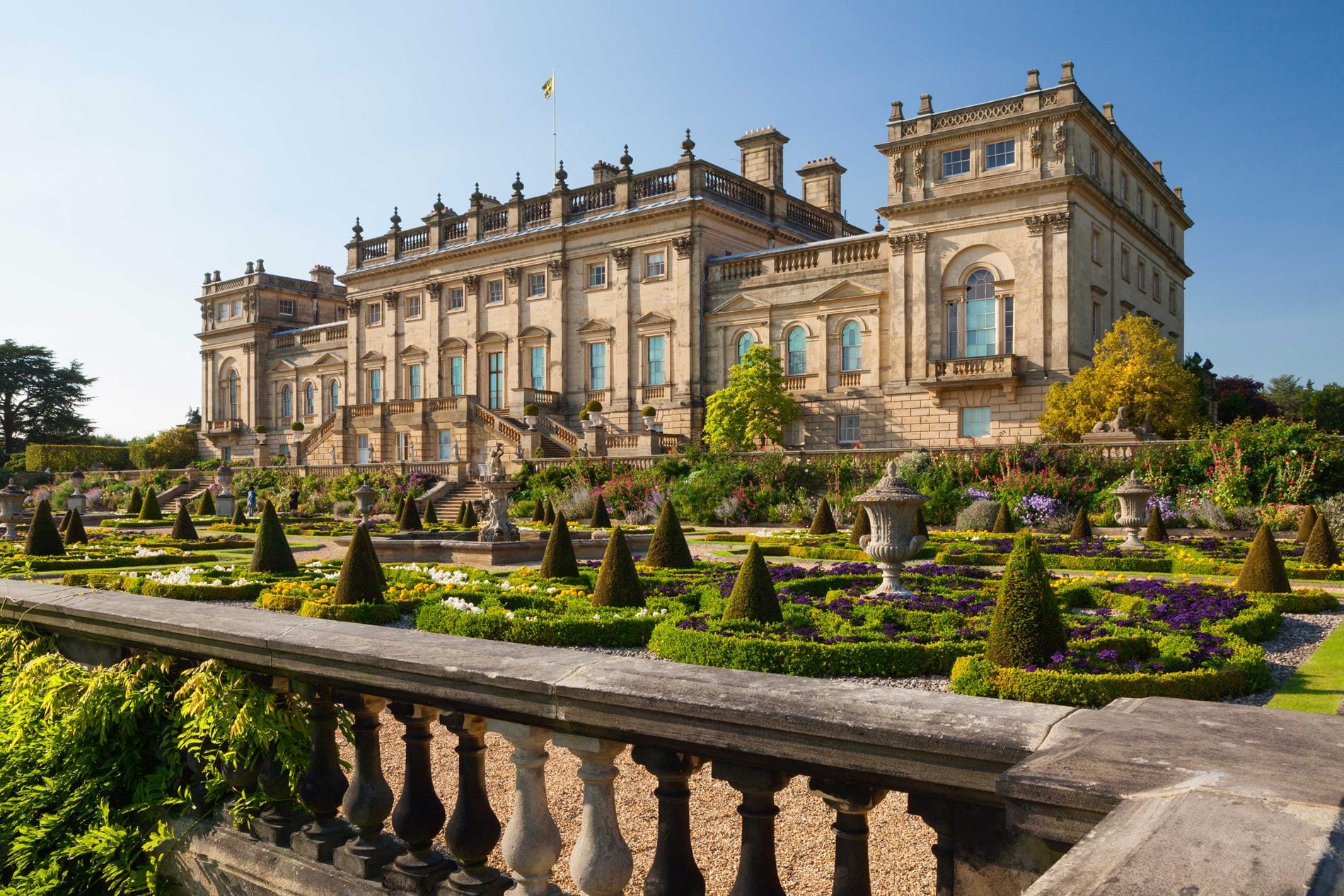Discover the captivating story of Harewood Castle, a dramatic Yorkshire landmark perched high above the Wharfe Valley. From its 14th-century construction to its modern-day restoration, this article unveils the castle’s rich history, architectural marvels, and practical visitor information. Journey through time as we explore the lives of its inhabitants, the evolution of its design, and the ongoing efforts to preserve this significant piece of Yorkshire’s heritage. Then, plan your visit with our handy visitor’s guide—ready to uncover this hidden gem for yourself?
A Yorkshire Fortress Through Time
Harewood Castle, more than just weathered stones, is a living testament to Yorkshire’s vibrant past. Its strategic hilltop location offered commanding views and natural defenses, shaping its destiny from its probable 14th-century origins. Some evidence suggests an even earlier structure may have existed on the site, but the current castle’s definitive history begins with the De Lisle family.
Fortified and Fortified Again
While the De Lisles laid the foundation, Sir William de Aldeburgh significantly enhanced Harewood Castle’s defenses in 1366, adding battlements and strengthening its formidable structure. The result was a powerful rectangular tower house with sturdy angle towers, a protected courtyard, and even a chapel above the portcullis chamber, all symbols of wealth and power in medieval Yorkshire. A four-story kitchen wing, complete with a barrel-vaulted basement and its own well, suggests a higher level of comfort than one might expect in a medieval fortress.
Changing Hands, Crumbling Stones
After Sir William de Aldeburgh’s death, the castle passed through several prominent families, including the Rythers and Redmaynes largely through inheritance via marriage. However, financial difficulties eventually led to its sale in 1600 to Sir William Wentworth. By the 1630s, abandonment and decay had set in, culminating in its sale for building materials later in the 17th Century. This sadly common fate left only poignant remnants of its former glory.
Rebirth from Ruins: A Restoration Triumph
Fortunately, Harewood Castle’s story didn’t end there. Around the year 2000, a significant £1 million restoration project breathed new life into the ruins. This painstaking effort aimed to preserve this vital part of Yorkshire’s heritage, showcasing a blend of historical preservation and modern methodologies.
Who Lived Within Harewood Castle’s Walls?
The stories of Harewood Castle’s inhabitants, woven into the very fabric of the castle remains, shed light on the lives of medieval Yorkshire power brokers. Their experiences paint a vivid picture of both privilege and the ever-present threat of conflict.
Medieval Life: A World of Privilege and Peril
Experts suggest construction probably started in the 14th century, with the De Lisle family likely amongst the first residents. Imagine their lives: a world of privilege balanced precariously on the constant need for vigilance. Their daily routines included managing their extensive lands, defending their home, and ensuring the castle’s continued upkeep. Life within those walls, with its tight-knit community, created an atmosphere quite different from that of today. Sir William de Aldeburgh, through his marriage into the family, played a pivotal role with his significant fortifications in 1366.
From Lords to Neglect: A Downward Spiral
Following de Aldeburgh’s death, the castle passed through several families: the Rythers and Redmaynes, each leaving their own mark on the castle, though much of how their lives differed remains unclear. By the 17th century, financial pressures forced the sale in 1656 to Sir John Cutler, who subsequently sold Harewood for its building materials. This marks a devastating turning point in the castle’s existence, signaling its slow and painful decline.
From Neglect to Restoration: A Second Chance
For centuries, Harewood Castle lay in a state of ruin, a stark reminder of time’s relentless march. The fact of its Grade I listing serves as a testament to its historical significance, despite its derelict condition. Thankfully, the 2000s saw a dramatic shift with the extensive restoration project, proving the commitment to preserving history. The £1 million investment demonstrated the power of dedicated efforts to bring a piece of the past back to life.
Harewood Castle and Harewood House: Two Distinct Tales
[https://www.lolaapp.com/Harewood House] It is crucial to note the distinction between Harewood Castle and the nearby Harewood House. Harewood House has connections to the Lascelles family and West Indian plantations, representing a distinct era in comparison to the medieval history of Harewood Castle. While these locations might share a name, their individual histories and social contexts are markedly different.
A Medieval Masterpiece: A Glimpse into Daily Life
Harewood Castle was an impressive embodiment of medieval architecture. Its layout—a rectangular hall house, protective courtyard, and imposing corner towers—highlights its defensive design. Picture the main hall, the chapel elevated above the portcullis chamber, and the essential kitchen wing and well. The castle’s very fabric whispers of the lives lived within its walls, the daily routines, and the echoes of history.
Plan Your Visit: A Journey Through Time
While the castle’s interior is largely gone, exploring the ruins offers a captivating experience. The breathtaking views alone are worth the trip, allowing visitors to almost envision the castle in its prime. Visit the [https://www.lolaapp.com/Harewood House website] for opening times, access details, and more.
| Period | Inhabitants | Key Events |
|---|---|---|
| 12th-14th Cent. | Likely De Lisle family and others | Initial construction, possibly built on an existing structure |
| 14th Cent. | Sir William de Aldeburgh and his family | Major renovations and strengthening of defenses; obtained crenellation license |
| 15th-17th Cent. | Ryther, Redmayne families, then Sir John Cutler | Changing ownership, gradual decline, and eventual sale for building materials |
| 20th-21st Cent. | No permanent residents, restoration team | Grade I listing, extensive £1 million restoration project |
Exploring Harewood Estate: Can You Walk Around for Free?
[https://www.lolaapp.com/Harewood Estate grounds] Yes! While entrance to Harewood House requires a ticket, the expansive estate grounds offer free access to miles of walking trails.
Free Walking Trails: A Blend of History and Nature
The 1000-acre estate boasts diverse landscapes, including rolling hills, serene woodland paths, and the captivating ruins of Harewood Castle. Whether you prefer a brisk hike or a leisurely stroll, there’s a path perfect for you. One popular choice is the roughly 4.8-mile perimeter walk, offering stunning views of Harewood House and the wider Yorkshire countryside. Shorter, less demanding trails are also available.
Planning Your Free Walk: Practical Tips
Parking: Parking is available, but usually with a charge. Check the [https://www.lolaapp.com/Harewood House website] for details.
Public Transport: Bus routes are available; check the website for schedules.
Facilities: Restrooms are conveniently located throughout the grounds.
Safety: Stay on marked trails, wear comfortable shoes, bring water, and check the weather. Note that some areas around the castle ruins have uneven terrain.
Hidden Gems: Points of Interest Along Your Walk
Your free walk offers a chance to discover:
- Harewood Castle Ruins: Explore the atmospheric ruins and imagine medieval life.
- The Deer Park: Watch for the elegant deer that grace this area.
- Almscliffe Crag Viewpoint: Enjoy breathtaking panoramic views.
Accessibility Considerations
[https://www.lolaapp.com/Harewood House] The estate has varying levels of accessibility; consult the Harewood House Website for detailed information.
Harewood House: A Star on the Silver Screen
[https://www.lolaapp.com/Harewood House] Harewood House, beyond its inherent beauty, boasts an extensive list of film and TV credits.
A Cinematic Legacy: From King Ralph to Downton Abbey
Its cinematic journey began in 1991 with King Ralph, showcasing its grand rooms. Since then, it’s become a go-to location for period dramas such as Victoria and Downton Abbey, as well as the long-running soap opera, Emmerdale. The House’s remarkable architectural diversity and picturesque setting make it a popular choice for filmmakers of all kinds.
| Year | Production | Type | Notes |
|---|---|---|---|
| 1991 | King Ralph | Film | Used various parts of the house. |
| 1996-Present | Emmerdale | TV Series | Regularly uses sections of the estate for filming. |
| 2016-2019 | Victoria | TV Series | Featured the State Floor and other areas across many episodes. |
| 2019 | Downton Abbey (Film) | Film | Utilized both interior and exterior shots. |
The full extent of Harewood House’s filming history likely remains unknown, suggesting further research might reveal even more productions. The House’s enduring popularity stems from its remarkable blend of stunning architecture, rich history, and picturesque surroundings, making it a truly unique and sought-after filming destination.
- Discover Long Black Pepper: Flavor & Health Benefits - April 25, 2025
- Shocking Twists: The Grownup Review: Unreliable Narration - April 25, 2025
- A Quiet Place Book vs Movie: A Deep Dive - April 25, 2025
















